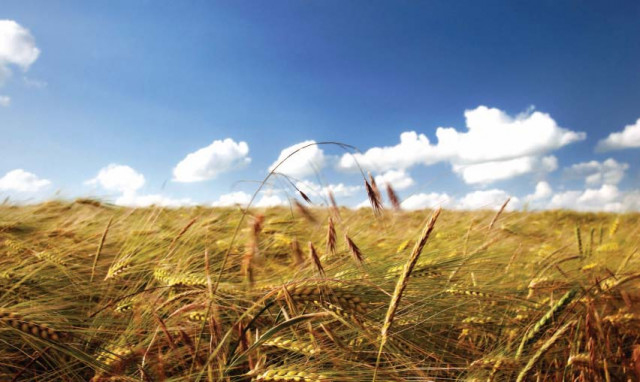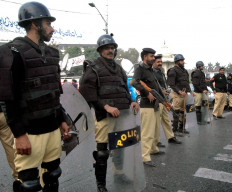
Climate change could have catastrophic consequences for the water and food supply in Pakistan and attitudes towards the environment must change at the personal and government level if the country is to cope with the challenge, said speakers at a seminar organised by the Environmental Protection Department on Thursday.
Pakistan is already a water scarce country and will likely have to buy water by 2050, said Prof Ghazala Nasim of Punjab University, who gave a talk on the impact of rising temperatures on agriculture and biodiversity at the seminar titled ‘Climate Change Consequences and Mitigation’.
She said rising temperatures would hurt two of the biggest food crops in Pakistan, wheat and rice. Wheat production would fall because of increased carbon dioxide concentration in the atmosphere, while rice does not grow at temperatures of above 30 degrees Celsius, she said.
“Today, 800 million people worldwide are hungry. If we don’t make amends, more are likely to get hungry,” she said.
Prof Nasim said that the spread of “environment wisdom”, a term she defined as meaning awareness about environmental issues, was the need of the hour. She said that climate change had already taken a toll on agriculture, as she showed the audience pictures of people pollinating apple trees in China because there were no bees around to do so.
A Punjab University student asked if the problems of water-logging and salinity would be affected by climate change. Prof Nasim said that farmers should grow plants such as a coloured grass that absorbs salts from the soil and can also feed cattle. She said the Agriculture Department should force farmers to use laser levellers to prevent water-logging.
Another student commented that the Pakistan Environmental Protection Act of 1997 lacked regulations governing the use of pesticides. Prof Nasim said that there were many other loopholes in the law as well.
Dr AR Saleemi of the University of Engineering and Technology (UET) in his talk on mitigation measures agreed that raising awareness was key to the battle against climate change. He noted that the concentration of carbon dioxide in the atmosphere had been consistent at 300 parts per million (ppm) for 1,500 years, but had risen to 400 ppm over the last 250 years.
He said that people should be encouraged to eat vegetables rather than meat, as methane from flatulent cattle was a major greenhouse gas. He said Sui Northern Gas Pipelines needed to fix more than 150,000 loose connections from which gas was escaping into the air.
About alternatives to fossil fuels, he said industries should prefer wind and solar energy over bio-fuel. He said that water bodies needed to be kept clean and forests conserved, as they helped absorb carbon dioxide from the atmosphere.
Muhammad Riaz, chief meteorologist with the Meteorological Department, said that the data showed that there had been no significant rise in temperature or change in monsoon patterns in Pakistan’s major cities. He had graphs to show during his presentation, but was unable to do so because of a power outage.
Some students were sceptical about his presentation. One asked why the spring and autumn in Lahore had been much shorter in recent years. Riaz responded that climate change studies looked at trends over 30 years or more and it was too soon to say that the shorter spring and autumn would be a lasting shift.
Ahsan Javaid, who is in charge of the Clean Development Mechanism Cell of the Water and Power Ministry, gave a visual presentation of some of the global effects of climate change. Since 1979, he said, more than 20 per cent of the glacial ice at the poles had melted. He said that 25 per cent of mammal species and 12 per cent of bird species faced extinction if average global temperatures rose by 5.8 degrees. EPA Secretary Sajjad Saleem Hotiana, the chief guest, and new EPD Director General Maqsood Ahmad Lak also attended the four-hour seminar.
Published in The Express Tribune, February 10th, 2012.


















COMMENTS
Comments are moderated and generally will be posted if they are on-topic and not abusive.
For more information, please see our Comments FAQ